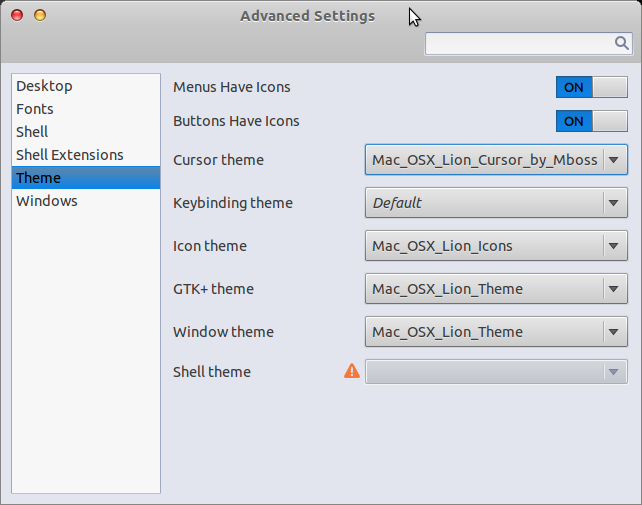Apt-get For Mac
Jul 04, 2019 sudo add-apt-repository ppa:noobslab/macbuntu sudo apt-get update sudo apt-get install macbuntu-os-icons-lts-v7 sudo apt-get install macbuntu-os-ithemes-lts-v7. After installation, open the Unity Tweak Tool and set the mac theme as your current theme and apply the macbuntu icons also. What on Earth are you doing? MacOS doesn't use apt-get - at all. It doesn't come with a package manager. There are independent package management tools, to my mind the best of them is homebrew from here. Some folks use MacPorts. Before you can do any development in macOS, you need Xcode's command-line tools - see here.
Name
apt-get - APT package handling utility - command-line interface
Synopsis
Description
apt-get is the command-line tool for handling packages, and may be considered the user's'back-end' to other tools using the APT library. Several 'front-end' interfaces exist, such as synaptic and aptitude.Mac OS 10.6 apt-get equivalent. I am looking for a command line equal to apt-get for the MAC. I want to install packages with ease. I have look at FINK but do not want to add third party apps on this MAC. Is there an alternative?, 12:46 PM #2: bsdunix. Senior Member. How to install apt-get on Mac OS X or rather OS X Mavericks so that we can use the power of installing Debian based packages is shown in this guide. We talked about UNIX Operating System, Unix Like Operating System and Linux Operating System before. Also, we have talked about the Unix Shell. So in this post I am going to show you how you can make apt-get to work in MAC OS X. To make apt-get work, you have to install FINK. Download the FINK project from this Download Page; Run the installer, if you have OS X version 10.5 or lesser. But if you have 10.6 or higher then you have to source compile and install. Follow the instructions.
Commands
Unless the -h, or --help option is given, one of the commands below must be present.
--help option is given, one of the commands below must be present.Options
All command-line options may be set using the configuration file, the descriptions indicate the configuration option to set. For boolean options you canoverride the config file by using something like -f-, --no-f, -f=no or several other variations.
Files
See Also
apt-cache(8), apt-cdrom(8), sources.list(5),apt.conf(5),apt-config(8), apt_preferences(5)
Apt-get Equivalent For Mac
Diagnostics
apt-get returns zero on normal operation, decimal 100 on error.Bugs
Reporting bugs in APT-RPM is best done in the APT-RPM mailinglist athttp://apt-rpm.org/mailinglist.shtml.Author
Maintainer and contributor information can be found in the credits pagehttp://apt-rpm.org/about.shtml of APT-RPM.Referenced By
apt(8),aptitudeApt-get Mac Os
(8),dselect(1),fakechrootApt-get For Mac Os
(1)Apt-get Macchanger
The apt-get command is specific to some varieties of Linux e.g. Ubuntu it is not a command included in OS X which is based on FreeBSD.
SMART Board for Education Education Software SMART Board Pro for Business Business Software SMART Podium. SMART Notebook® software for Windows and Mac comes with lesson creation tools, subject specific features and endless ways to wow students in any grade level. Try it for free. This software for Mac OS X was originally designed by SMART Technologies. The most popular version among the application users is 10.7. From the developer: Powerful and easy-to-use, SMART Notebook software is at the core of creating and delivering interactive lessons that engage students. SMART Board software, regardless of the operating system, can open. SMART Board™ Software for Mac Computers: A Quick Reference of Features and Functions Version 9.5 (May 2006) SMART Technologies Inc. SMART Board Software 9.5 for The Mac OS X. The new software will allow Mac OS X to integrate with the company's family of interactive whiteboards that include SMART Board, Rear Projection SMART Board, and SMART Board for Plasma Displays. Smart board software for mac.
There are similar offerings to apt-get for OS X but all of them have to be installed before you can then use them to install packages.
Brew - http://brew.sh
MacPorts - http://www.macports.org
Fink - http://www.finkproject.org/
You can also of course do it by hand by installing GIT on a Mac along with the Mac Command Line tools and then GIT cloning the source for a package and compiling it just like it is sometimes necessary with Linux.
GIT - http://git-scm.com/download/mac
Command Line Tools - http://railsapps.github.io/xcode-command-line-tools.html
Install Apt Get Mac
Jul 21, 2015 2:51 AM
LEGO® Worlds is an open environment of procedurally-generated Worlds made entirely of LEGO bricks which you can freely manipulate and dynamically populate with LEGO models. Create anything you can imagine one brick at a time, or use large-scale landscaping tools to create vast mountain ranges and dot your world with tropical islands. Lego worlds for mac os x. Jun 03, 2015 So for some who want to give Lego Worlds a go on your mac you can try it out using Cross Over. Hope this helps people, please keep in mind that the game may not run correctly but will give you the chance to play it for a while using the trail. Lego Worlds Mac OS X MacGamesWorld has very good news for all the sandbox games lovers, especially for those who like the Lego series. A new construction simulator game has been released and after a few days of hard work, it is now available for Macintosh. We talk about Lego Worlds Mac OS X.